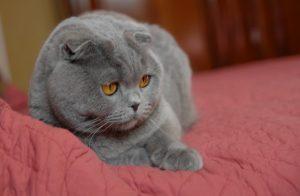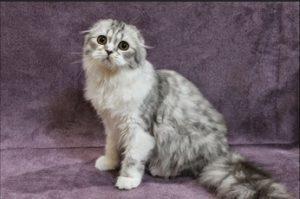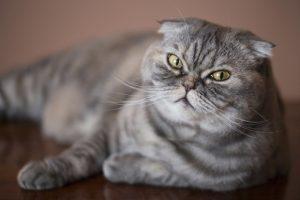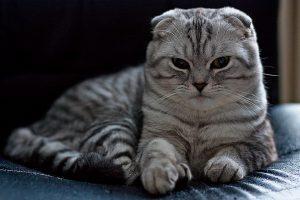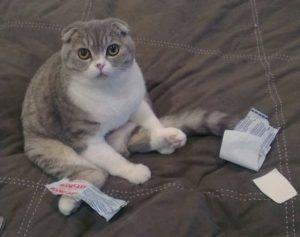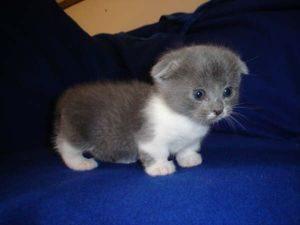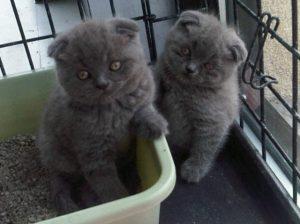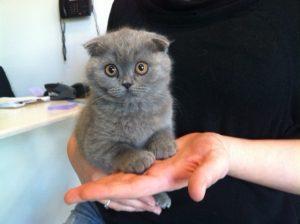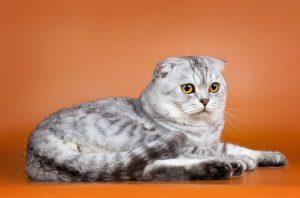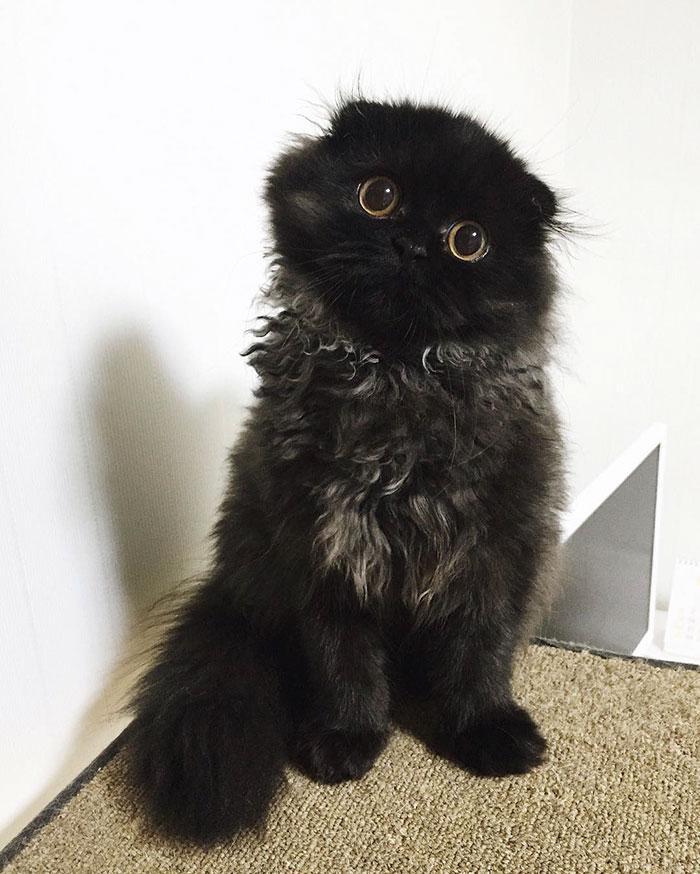Scottish Fold
The Scottish fold is a domestic breed with folded ears that gives it a striking appearance just as an owl. These cute-looking cats possess a pleasant and friendly disposition that makes them exceedingly popular.
Quick Information
Physical Appearance & Size
| Body Type: | Medium |
| Physical Description: | Roundish body; dome-shaped head; short neck; short, gently curved nose; medium or short legs and a long tail with a rounded tip ( at times) |
| Weight (Size): | 7 to 11 pounds |
Colors & Patterns
| Coat Type: | Short or long-haired with a dense, soft and plush texture |
| Color: | All solid colors like gray, lilac, tuxedo, orange, black and even white |
| Pattern: | Bicolor, tabby, parti-color |
| Eyes: | Big round widely-spaced eyes, the shade depending on the coat color, which may be green, blue or even odd-eyed |
| Ears: | Folded forward or downwards to the front part of their head |
Other Characteristics
| Other Names: | Scot Fold |
| Average Life Span/ Life Expectancy: | 11-14 years |
| Behavioral Characteristic: | Good-natured, playful, affectionate, curious, and outgoing |
| Lap Cat: | No |
| Shedding (Do they shed): | Moderately |
| Vocalization: | Generally quiet |
| Good with Children: | Yes |
| Hypoallergenic: | No |
| Country: | Scotland |
| Competitive Registration/ Qualification: | TICA/ CFA, AACE, ACFA/CAA |
History
The foundation stone of this breed was laid by Susie, a barn cat of white hue spotted at a farm adjacent to the Coupar Angus town of Scotland. One of the significant traits that made Susie different was her folded ears, giving her an owl-like look. Two of her kittens were also born with folded ears, of which William Ross, a local farmer, and cat enthusiast took one. Taking the initiative of developing this breed, he registered them in 1966, with Great Britain’s GCCF (Governing Council of the Cat Fancy). Seeking assistance from geneticist Pat Turner, he initiated a breeding program producing 76 kittens in a three-year span where 42 and 34 were with and without folds respectively. Snooks, a white fold kitten, who was one of Susie’s children was the only one to reproduce and carry on the lineage. The Scottish Fold breed in the present time is all Susie’s descendants.
Breed Registration
They were not recognized in Europe as show cats while their registrations with the GCCF were discontinued owing to crippling along with particular genetic concerns as well as ear ailments that occurred mostly because of their folded ears. However, after being exported to the USA in 1971, it gradually attained recognition by several cat associations. They were even crossed with the British and American Shorthairs, though the Folds have maintained a distinct appearance of its own rather than being influenced by the other two breeds.
Ears of the Scottish Fold Cat
All of the Scottish Fold kittens have straight ears at birth, which might develop into a fold by the time they are three to four weeks old if they have the inherent gene. Kittens who do not have folded ears are referred to as “straights.” The original lot had a single fold that was doubled or tripled because of selective breeding placing the ear flatly against its head.
Temperament and Personality
- Has an affectionate nature, being bonded to its family members.
- Loves to be in the company of people, getting depressed if let to live alone.
- Quickly adjusts and adapts itself to all kinds of environment.
- Shares a friendly rapport with kids, emerging as their perfect playmate.
- Possesses a curious and amusing nature, attempting to open any cabinet within its reach to grab its favorite plaything or even a snack.
- Have unique postures as they slumber on their back or even sit stretching out their legs with the paws on their tummy.
- Mingles well with other felines and cat-friendly canines.
Who is the Scottish Fold good for
- Those desiring for a perfect family cat who would follow them everywhere.
- Households where someone or the other is always present to entertain the cat.
- For people who love getting amused to a host of cat tricks.
- Owners who would often require traveling with their cat or desire taking it to shows.
Care
The grooming need of the Scottish Fold depends on their hair type. Those with short hair need to be brushed two times in a week for the removal of mats and tangles using a steel comb, while the long-haired variations need everyday brushing. Other hygiene needs include nail trimming and teeth brushing.
Some of the common health problem the Scottish Fold suffers from includes heart ailments like hypertrophic cardiomyopathy, polycystic kidney, and osteochondrodystrophy.
Training
These intelligent cats, being delightful to train, can be taught impressive tricks.
Feeding
These large cat breeds need a good quality of cat food alongside a balanced diet rich in essential nutrients.
Interesting Facts
- The Scottish Fold had a pivotal role in Peter Gethers’ novel “The Cat who went to Paris” which dealt about the author and his pet cat Norton.
- They have gained immense popularity in the web with Maru, a feline of this breed had over millions of subscribers on YouTube, while Scottish Folds siblings Shrampton and Bunni are followed by over 40,000 on Instagram.
- TICA has acknowledged the Scottish Fold Munchkin, produced by crossing the Scottish Fold and the Munchkin cat in the experimental breed category. They have the Scottish Fold’s folded ears and the Munchkin’s short legs.

